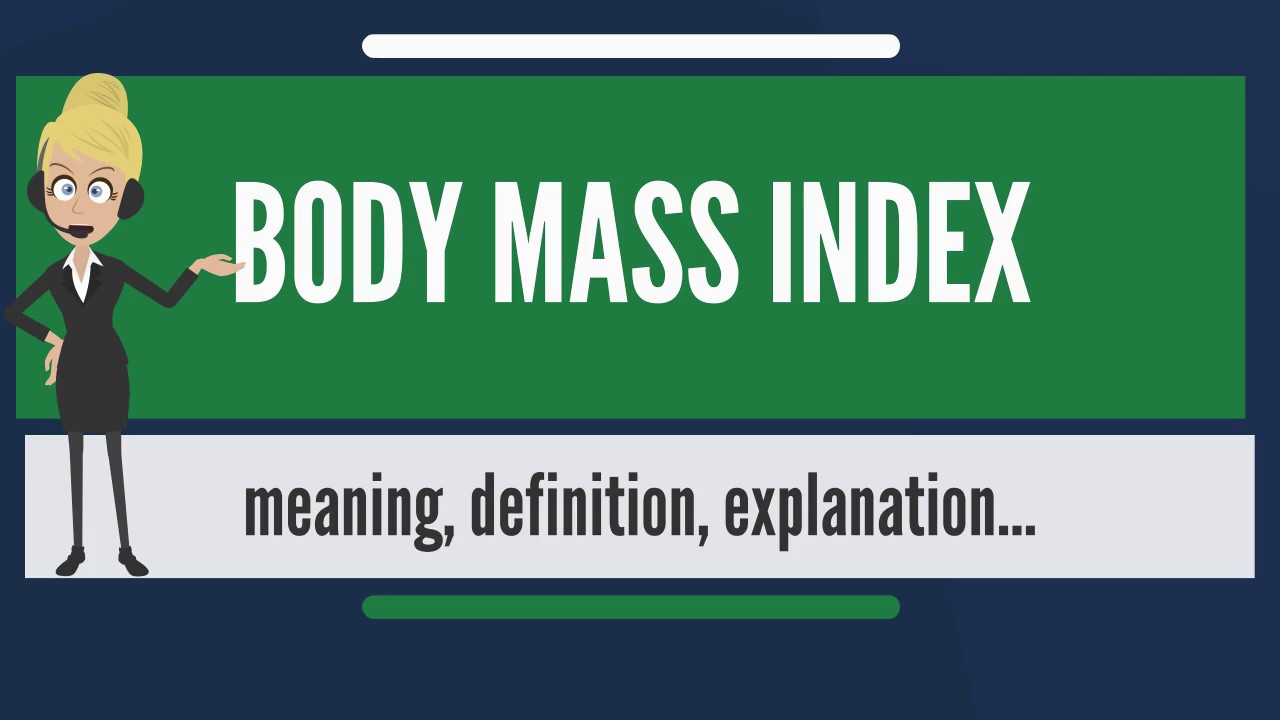✪✪✪✪✪ http://www.theaudiopedia.com ✪✪✪✪✪ What is BODY MASS INDEX? What does BODY MASS INDEX mean? BODY MASS INDEX meaning – BODY MASS INDEX definition – BODY MASS INDEX explanation. Source: Wikipedia.org article, adapted under https://creativecommons.org/licenses/by-sa/3.0/ license. The body mass index (BMI) or Quetelet index is a value derived from the mass (weight) and height of an individual. The BMI is defined as the body mass divided by the square of the body height, and is universally expressed in units of kg/m2, resulting from mass in kilograms and height in metres. The BMI may also be determined using a table or chart which displays BMI as a function of mass and height using contour lines or colours for different BMI categories, and which may use other units of measurement (converted to metric units for the calculation). The BMI is an attempt to quantify the amount of tissue mass (muscle, fat, and bone) in an individual, and then categorize that person as underweight, normal weight, overweight, or obese based on that value. However, there is some debate about where on the BMI scale the dividing lines between categories should be placed. Commonly accepted BMI ranges are underweight: under 18.5 kg/m2, normal weight: 18.5 to 25, overweight: 25 to 30, obese: over 30. People of Asian descent have different associations between BMI, percentage of body fat, and health risks than those of European descent, with a higher risk of type 2 diabetes and cardiovascular disease at BMIs lower than the WHO cut-off point for overweight, 25 kg/m2, although the cutoff for observed risk varies among different Asian populations. BMI is proportional to the mass and inversely proportional to the square of the height. So, if all body dimensions double, and mass scales naturally with the cube of the height, then BMI doubles instead of remaining the same. This results in taller people having a reported BMI that is uncharacteristically high, compared to their actual body fat levels. In comparison, the Ponderal index is based on the natural scaling of mass with the third power of the height. However, many taller people are not just “scaled up” short people but tend to have narrower frames in proportion to their height. Nick Korevaar (a mathematics lecturer from the University of Utah) suggests that instead of squaring the body height (as the BMI does) or cubing the body height (as the Ponderal index does), it would be more appropriate to use an exponent of between 2.3 and 2.7 (as originally noted by Quetelet). (For a theoretical basis for such values see MacKay.) Carl Lavie has written that, “The B.M.I. tables are excellent for identifying obesity and body fat in large populations, but they are far less reliable for determining fatness in individuals.” A frequent use of the BMI is to assess how much an individual’s body weight departs from what is normal or desirable for a person’s height. The weight excess or deficiency may, in part, be accounted for by body fat (adipose tissue) although other factors such as muscularity also affect BMI significantly (see discussion below and overweight). The WHO regards a BMI of less than 18.5 as underweight and may indicate malnutrition, an eating disorder, or other health problems, while a BMI equal to or greater than 25 is considered overweight and above 30 is considered obese. These ranges of BMI values are valid only as statistical categories.

What is BODY MASS INDEX? What does BODY MASS INDEX mean? BODY MASS INDEX meaning
- Post author:
- Post published:June 13, 2021
- Post category:Uncategorized
- Post comments:0 Comments
You Might Also Like

Sangram Pre & Post Workout Meal

Why Is Meat a Risk Factor for Diabetes?

Bodybuilding Nutrition, Diet Recipes & Workout – 44

21 Inner thigh Exercises – Adductor Variations

Why Do We Get a Fever? | The Dr. Binocs Show | Best Learning Videos For Kids | Peekaboo Kidz

What is METABOLIC AGE? What does METABOLIC AGE mean? METABOLIC AGE meaning & explanation

Risk Associated With Iron Supplements

Digestive System And Asnas Video – 1

Oncology Video – 3

Hematology Video – 3

Diabetes: What Is Diabetes And How You Can Fight

10 Bad Habits That Damage Our Brain Or Gets Neurological And Nervous System Diseases & Disorders

cutting workout/ cutting exercise/ cutting diet tips in Hindi.

How To: Hanging Leg-Lift

How many sets and reps to build muscle | for size, mass, strength

Overweight & Obesity Video – 8

INSANE BICEPS: Preacher Curls at Home!

Diet Plan for Diabetes Management-Part 1

NFL concussions: 96% of former NFL players tested had CTE brain disease – TomoNews

how to avoid hair loss for woman + minoxidil

Before and after using the HGH

Blood glucose measurement – OSCE Guide

7 MIN STRETCHING EXERCISES AFTER WORKOUT ( New) | FULL BODY COOL DOWN FOR RELAXATION & FLEXIBILITY

How to Do an Overhead Press | Female Bodybuilding

Nutritional Psychiatry Video – 1

Ornithine During Liver Flush

B Vitamins.. Too Much of a Good Thing

Carbohydrate Nutrition Video – 1

Vitamins Minerals For Health Video – 2

How To: Alternating Floor Oblique Twist w/ Weight

Pre Blended Creams Video – 4

Love Psychology Video – 4

Sports Injuries Video – 2

Physiotherapy in Rehabilitation Video – 2

Exercises For Improving Blood Circulation In Legs – by Dr Sam Robbins

Telemedicine for Erectile Dysfunction – Tadalafil and Sildenafil

A Randomized Trial of Silymarin for the Treatment of Nonalcoholic Steatohepatitis

Fat Loss, Weight Loss Video – 23

Why Do Newborn Babies Get Jaundice?
Lactation

Spa Products Video – 2

